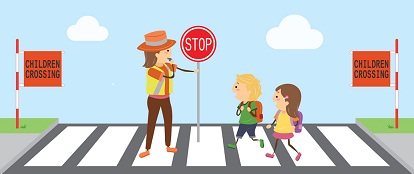Safe school travel (SafeST) program

The safety of students travelling to and from school is one of the most important issues for school communities. One way this is achieved is by providing the safest possible journey to and from Queensland schools. The Department of Transport and Main Roads supports safe school travel with the SafeST program and resources.
Addressing school safety issues
Establishing a SafeST Committee is the first step in identifying and addressing school safety concerns. The SafeST Committee will develop a school road safety action plan for implementing strategies and solutions.
Ideally an action plan would outline:
- what the school is planning to do to improve road safety
- how it expects road safety will improve
- how the school will monitor and evaluate the success of the plan
- when it will be done
- who is responsible for making it happen.
School road safety is a matter that requires whole of community awareness and commitment. Improving the safety of school travel for all children relies on the involvement and engagement of schools (including parents associations), local government and state authorities such as Education Queensland, Queensland Police Service, TMR and TransLink and/or bus operators as required.
Contact your local TMR road safety officer who will assist the committee to access resources and information.
Resources
School Crossing Supervisor Scheme
The School Crossing Supervisor Scheme is a state-wide program introduced to reduce the risk of death and injuries to children attending schools. A school crossing supervisor’s role is to assist children in safely crossing roads on their way to and from school.
All applications for school crossing supervisors are subject to meeting established criteria and availability of funding. To determine eligibility and apply for a school crossing supervisor in your area, contact your local TMR road safety officer.
If you are interested in becoming a school crossing supervisor, contact your local TMR road safety officer.
No Excuses guide
The No Excuses road safety guide is available for schools seeking to improve the safety of children in the school road environment. The guide can be used as a tool, highlighting the most common road safety issues and empowering schools to undertake practical and tangible actions.
The guide covers:
- congestion
- driver behaviour
- pedestrian behaviour
- speeding.
For more information or to obtain a copy of the guide, contact your local TMR road safety officer.
Look Out! program
The Look Out! program is designed to assist schools in managing the flow of traffic in pick-up and set-down areas. Parents/caregivers stay in their vehicle and move in a queue to the top of the 2 minute Loading Zone where their child will be waiting at a safe pick up point. This involves:
- volunteers managing the queue and directing children to the cars
- parents in the queue ‘looking out’ for their children to get in the car
- children at the designated pick up/set down area looking for the family car.
For more information, contact your local TMR road safety officer.
Other resources
School zones
School zones are installed to reduce traffic speed near schools during the times indicated in the school zone sign.
Community road safety grants
Community road safety grants are available annually to community groups for projects and programs that address road safety issues.
Small electronic devices within school zones
Information on the operation of small electronic devices (<4m2) within school zones is available in the Small Electronic Devices within School Zones fact sheet.
- Last updated 20 March 2020

